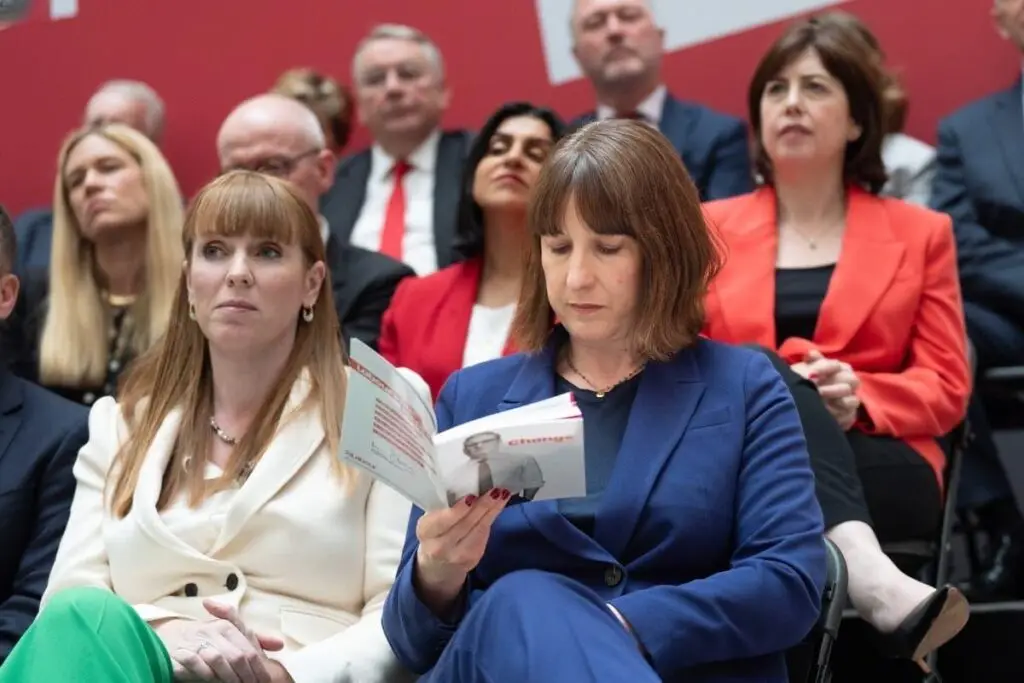Labour’s manifesto is under scrutiny as they promise no new taxes or austerity measures while aiming to reduce debt. Economic growth is vital to achieving these goals, yet it’s a target that has eluded the nation for years. Meanwhile, specific details on how to stimulate this growth are notably vague.
Keir Starmer and his team have made bold promises, such as freezing tax rates and investing in green prosperity. However, the economic landscape is fraught with challenges, and the question remains: can Labour’s plans withstand the scrutiny and deliver the promised outcomes?
Economic Growth Challenges
Labour’s manifesto identifies a crucial issue – Britain’s lack of economic growth. The country needs more growth to fund public services properly and avoid a surge in taxes. However, recognising the problem is the easy part; finding a solution is more complex.
Labour’s manifesto, spanning over 130 pages, is short on specifics. It talks a lot about strategising and setting up new agencies to devise strategies. But how does this translate to practical measures that can stimulate the economy? The details are vague.
Tax Promises and Fiscal Policies
Keir Starmer has pledged not to hike income tax, national insurance, or VAT for ‘working people’ and to freeze corporation tax at 25%. However, this claim is somewhat misleading. The freeze on tax thresholds will push more workers into the higher tax bands as wages increase, a phenomenon known as ‘fiscal drag’. This effectively acts as a hidden tax rise.
Labour acknowledges the need for more investment to boost the economy. Some government input is promised, but the plan is modest. For instance, the ‘green prosperity plan’ funding is capped at £5bn annually, a figure that pales in comparison to overall public spending. This spending will be financed partly by a windfall tax on energy giants and some additional borrowing.
Public Spending Plans
The £5bn yearly allocation for the ‘green prosperity plan’ is a small fraction of Labour’s other commitments. It’s about half the cost of their free childcare plans or maintaining the triple lock on state pensions, which ensures annual increases in line with earnings, inflation, or 2.5%, whichever is higher.
Labour has promised to keep the triple lock on pensions, a policy that is both symbolic and expensive. However, a review of pensions is on the horizon. It will likely explore ways to encourage pension funds to invest more money within the UK.
Labour’s focus on public investment is evident, though its limits are clear. With the pensions review pending, the private sector’s role becomes crucial. The question remains – will the private sector meet Labour’s expectations and step up?
Private Sector’s Role
Starmer and Reeves have adopted a cautious approach, promising less and aiming to deliver more. This strategy is wise, yet public spending promises remain modest. Labour insists there will be no additional tax hikes on working people and no return to austerity.
As the potential new chancellor, Reeves faces stringent rules. Day-to-day spending must come from revenues, and debt must reduce as a proportion of GDP within five years. The Institute for Fiscal Studies points out that current forecasts leave no room for extra spending beyond what is already planned by the current government.
The constraints imply that Labour’s spending could approach austerity levels seen from 2010-2015. Labour plans to strengthen the Office for Budgetary Responsibility (OBR) to keep checks on future government spending.
Economic Performance and Risks
Labour’s success hinges on the economy performing better than anticipated. The manifesto, offering little in the way of economic stimulus, essentially leaves Labour hoping for favourable economic conditions.
Without improved economic performance, Labour may face tough choices – cut spending, raise taxes, or bend its fiscal rules. Each option brings significant challenges. The OBR, tasked with ensuring government accountability, is likely to scrutinise any deviations closely.
Future Outlook
Labour’s approach involves considerable risks and uncertainties. Achieving the ambitious goals set out in the manifesto without increasing taxes or returning to austerity depends heavily on favourable economic conditions.
The reliance on private sector investment, government borrowing, and limited public spending underscores the fragile balance Labour seeks to maintain. The coming years will be a true test of whether Labour’s strategies can deliver the promised outcomes.
Labour’s ambitious proposals hinge on a delicate balance between public and private investment and favourable economic performance. The manifesto is abundant in vision but sparse in concrete actions, leaving many questions unanswered. Ultimately, the realisation of Keir Starmer’s promises will depend on factors beyond Labour’s immediate control. Only time will reveal the effectiveness of these plans.


